We're an affiliate
We hope you love the products we recommend! Just so you know, we may collect a share of sales or other compensation from the links on this page at no additional cost to you. Thank you if you use our links, we really appreciate it!
Classic dog bowls and elevated bowls are the two main types of dog feeders. The latter is getting more popular among pet owners whilst there are still some controversies.
Like all other dog accessories, there are both pros and cons of elevated dog feeders.
A good dog feeder should give your dog both convenience and comfort when eating. You don’t want a situation where your dog struggles to eat their food.
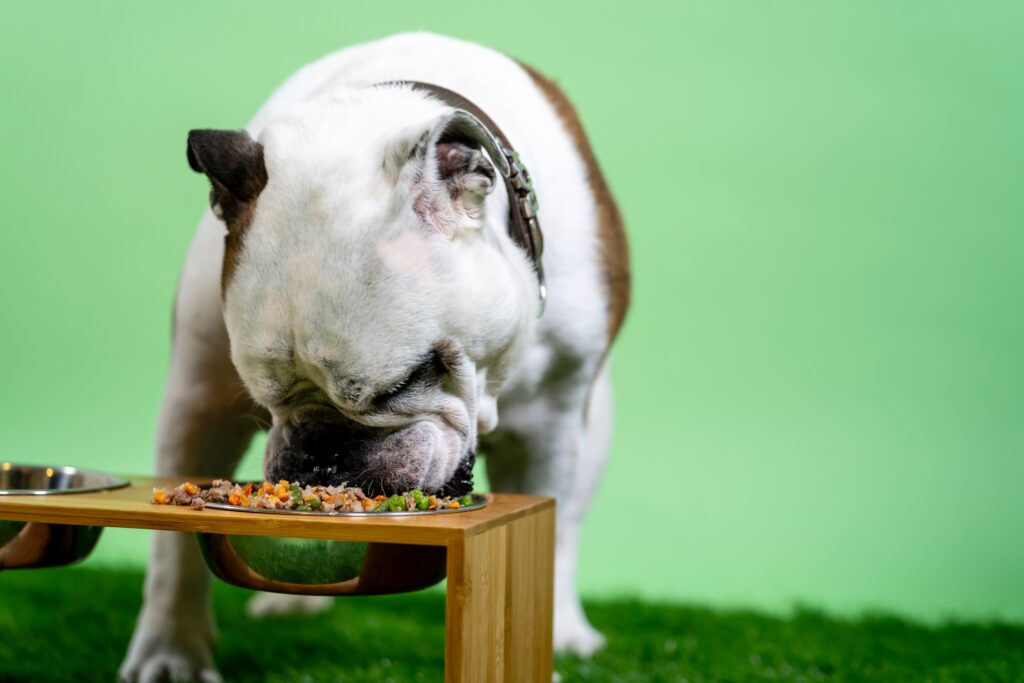
Elevated dog bowls are usually recommended for dogs with specific medical conditions. They can also be used regularly by medium, large and giant breed dogs.
Do the benefits of elevated dog bowls outweigh the cons? We will try to put an end to this debate by discussing both the pros and cons of elevated dog bowls.
What Are Elevated Dog Bowls?
An elevated dog bowl is a dog food bowl that has been raised off the ground level by several inches. It usually consists of the supporting stand and the feeding bowls.
Elevated (raised) dog bowls come in different designs and heights. There are those that have fixed elevations while others can be adjusted.
Most of them are also made with two bowls. One for food and the other for drinking water. You should choose the bowl with the capacity to hold enough food for your pup.
Make sure to have a look at our picks for the best elevated dog bowls that are available in the market.
What Is the Ideal Height for An Elevated Dog Bowl?
The ideal height of a dog bowl should correspond with your dog’s size. It should be at a height parallel to your dog’s shoulder. It is best to get an adjustable product so that you can fine-tune to find the sweetest spot for your dog.
Get the measurement from your dog’s chest down to the floor in inches. Subtract 6 inches for large dogs and 3 inches for medium dogs from the measurement obtained.
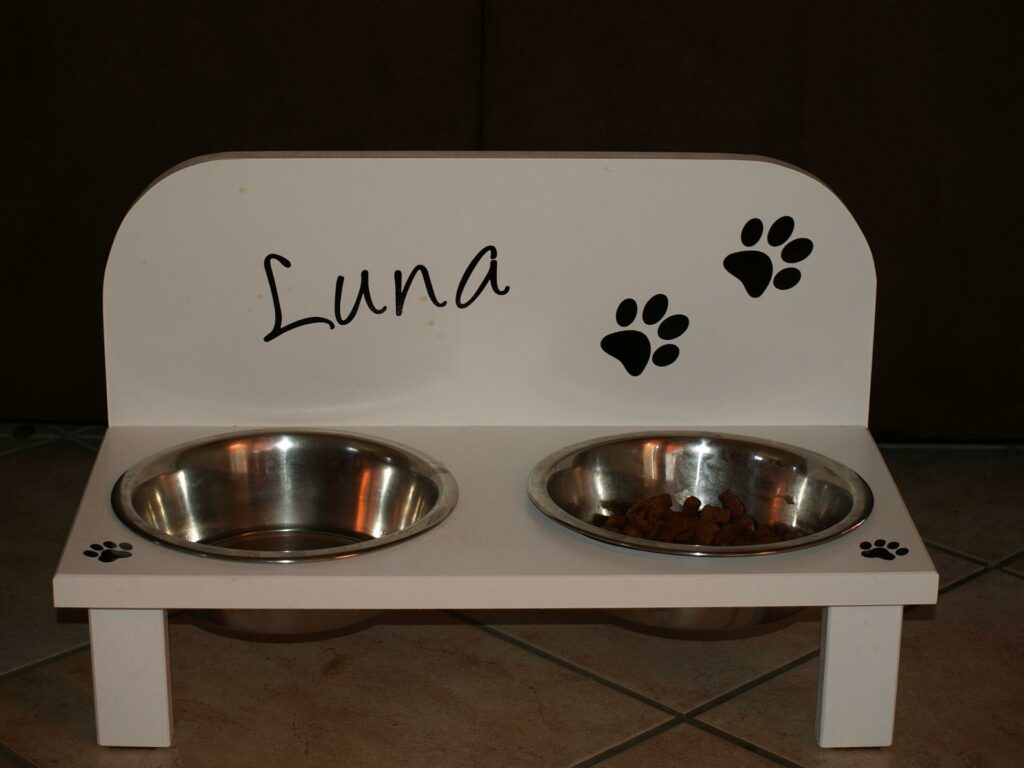
This should be the maximum height you should consider for your dog. It will typically be between 7 to 28 inches for medium, large and giant dog breeds.
Other things to consider when buying an elevated dog feeder are:
- Capacity
- Shape
- Materials used in construction.
- Type of stand
- Available space in your house
- Aesthetics i.e., color, shape, and design.
Do Dogs Need Raised Feeders
Not all dogs would need elevated dog bowls. They are best recommended for dogs with orthopedic medical conditions. Your dog can however use these bowls at any time. Just be cautious to get the right size.
Your dog can still benefit from a raised bowl even if they don’t have a prescribed medical condition.
Elevated dog feeders are good for medium, large, and giant breeds. This is mainly because they give them easy access to food and water.
This smoothens the swallowing of food hence allowing for comfortable eating and easier digestion.
Are elevated dog bowls good or bad? Here, we explore the benefits and possible cons that are associated with these bowls.
10 Pros of elevated dog bowls
1. Provide a better feeding posture for dogs
Raised bowls provide a healthier posture for dogs to eat their food. The comfortable height enables them to get relief from neck muscle stress while eating.
It can be tiring for dogs to reach out for food on lower bowls. This might lead to back problems and discomfort while eating.
If your dog acts restless while eating, then this might be a sign of discomfort. It can be solved with an elevated dog bowl.
Do Elevated Dog Bowls Help with Digestion?
Raising your dog’s bowl allows them to feed comfortably without straining. Your dog can now swallow food and drink water smoothly. This gives room for proper food digestion.
This will help your dog reduce the chances of developing negative bloat and upset stomach.
Be sure to look out for the best bowl that fits your dog’s needs.
2. Sturdy
Elevated dog feeders are constructed to be firm on the ground. This reduces the chances of flipping and overturning when your doggo is eating.
You must have seen your dog struggling to keep their traditional bowls in place while eating. This stress can be eliminated with a raised food bowl. They are firm enough to hold your dog’s food while they eat.
A sturdy dog bowl reduces the chances of food spillage and wastage that results from it.
3. Keeps the feeding area clean
Due to the stability of elevated dog bows, your dog will not easily topple their food bowl. This helps to keep the area cleaner than if you would have used a classic bowl.
Elevated food bowls are also easy to clean. You can wipe off the dirt on site without dismantling the components of the accessory.
If you want a thorough cleaning, then you can use a dishwasher. Most of the bowls are stainless steel bowls and are dishwasher safe.
4. Slows down fast eaters
Fast-eating dogs are at risk of experiencing hiccups and some health conditions when they gulp up their food too quickly. They swallow air along with the poorly chewed food and this increases the risk of vomiting, gagging, and even bloating.
This behavior can be reduced by getting an elevated dog bowl for your pup.
Sometimes dogs might eat faster because of the uncomfortable posture when using the classic food bowls.
An elevated dog feeder gives them the comfort and right posture to eat their food slowly. You can also train your fast-eating dog to eat slowly by using puzzle treat toys.
5. Prevents dogs from lying down while eating
Dogs might lie flat on the floor while eating due to medical conditions and behavior as well. This is usually the first sign to let you know that your dog’s feeding posture is overwhelming them.
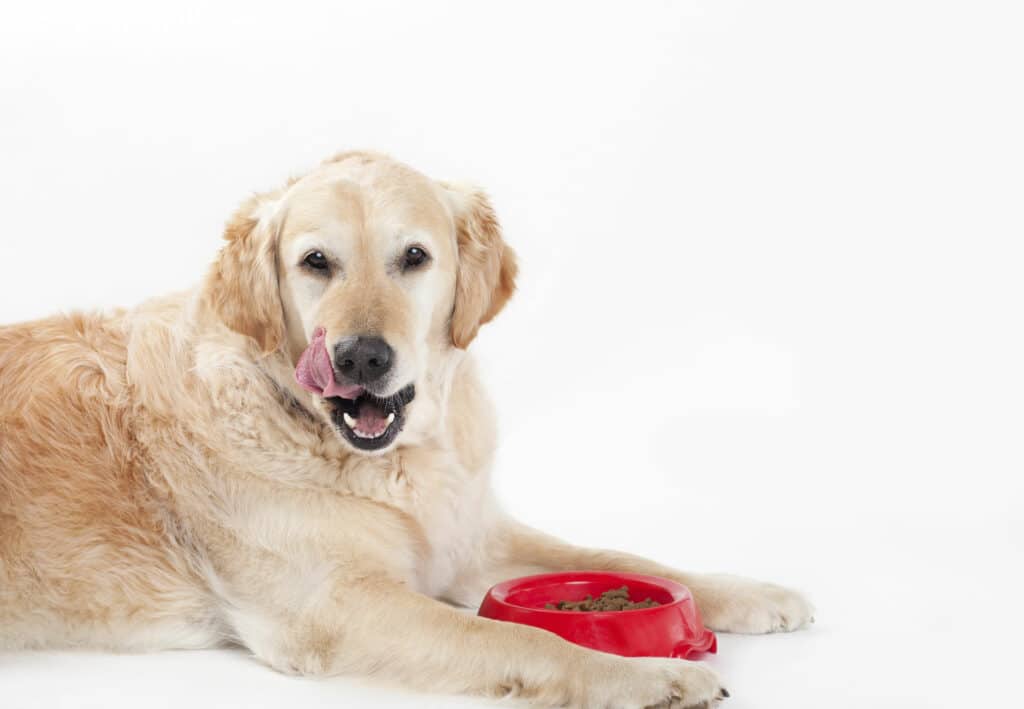
Lying down while feeding might cause digestive discomfort and neck problems in dogs.
6. Beautiful design
Most elevated dog bowls have been furnished with a pretty design that easily blends with your home décor.
You can put these feeding bowls in your living room and they will not seem to be out of place.
7. Maintains the temperature of the dog’s food
Putting a classic bowl on a bare floor aid in cooling down the food especially if the floor is cold. This floor makes your dog’s food cool faster and hence lose its taste. Chilled food might also cause your dog to have digestive discomfort.
Elevated dog bowls are raised off the ground and therefore are not in direct contact with the cold floor. This helps to maintain food temperature and tastiness. You can warm up your dog’s cold food by using warm bone broth.
8. Slows down pest attacks
Foods on ground-level bowls can be an easy target for crawling pests. These bugs might pose a health hazard to your dog when they interfere with their food.
Pests will find it difficult to crawl over to the food inside an elevated dog bowl.
9. Easier to fill
A raised dog bowl provides a comfortable platform for dog owners to fill food and water. This is convenient for the elderly and people with disabilities. Timely filling ensures their canine family doesn’t miss their scheduled meals.
10. Ideal for dogs with bone problems
Dogs suffering from orthopedic conditions are best served on an elevated food bowl. This gives them a better posture to get their meals without straining a lot.
It reduces the stress exerted on necks and joints when the dog feeds on a traditional bowl. Their weight is shifted to the hind limbs hence making them eat and drink more comfortably.
Are Raised Dog Bowls Dangerous?
Dog bowls raised to the correct height for your dog are not dangerous. However, a very tall bowl for your dog is not ideal. You can know if the bowl has been raised too much by observing your dog’s posture when eating.
If they raise their heads to eat or drink, then it is too high for them. Dogs should always eat while facing down.
A tall bowl is risky for your dog because it may subject them to choking, straining, and other health hazards.
5 Cons of Elevated Dog Feeders
Elevated dog bowls have their challenges. The good news is that most of these challenges can be avoided.
1. Health risks
Research findings have indicated that large and giant dog breeds might be predisposed to bloating when using a raised dog bowl.
Do elevated bowls cause bloat
There has been a controversy that bloating can be caused by elevated dog bowls. Bloating also known as Gastric Dilatation Volvulus (GDV) is a condition where the dog’s stomach is filled with gas. This excess gas predisposes your dog’s stomach to overstretch and twist.
This finding came from a published study in the Journal of the American Veterinary Medical Association in the year 2000.
The researchers were investigating the non-dietary risk factors of bloating in dogs. The parameters for this study were elevated bowls, age, relatives, and fast eating.
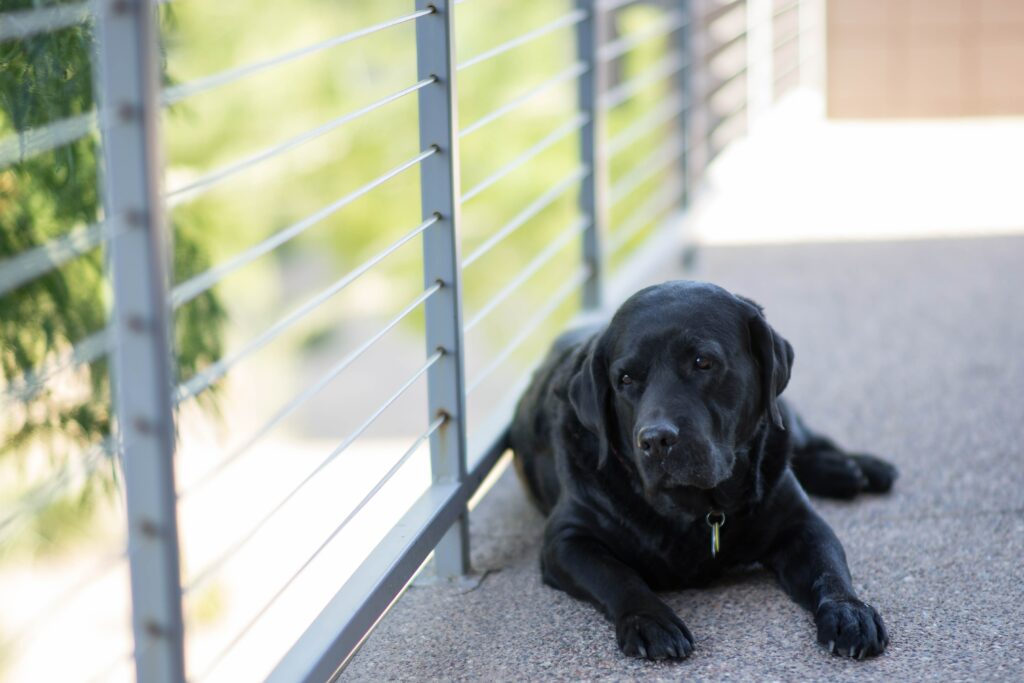
Among the 1637 dogs who participated in the study, between 20% (Large breeds) and 52% (Giant breeds) were found to have symptoms of bloating. This was attributed to the use of elevated food bowls.
This study opened the doors for further research to be undertaken in this area.
There is no singled-out cause of bloating in dogs. It is caused by a combination of several factors. Such factors include fast eating, citric acid in dry foods, high-fat foods, and eating toxic substances.
Postulating that elevated dog bowls can be a single cause of bloating in dogs is untrue.
Many veterinarians have shared their thoughts on this study. Remember that every dog is different and the best person placed to determine the health risk factors of your dog is the vet.
Be sure to seek your vet’s recommendation when switching from a traditional bowl to an elevated one.
2. Not ideal for bone-eating
Dogs love bones because of their delicious taste and fun in eating. Bones can be tough for dogs and they prefer eating them while holding them down with their paws.
Serving your dog bones in a raised bowl might not be a good idea.
3. Costlier than regular bowls
Everything good comes with an extra cost. Raised dog bowls are a little more expensive than regular ones.
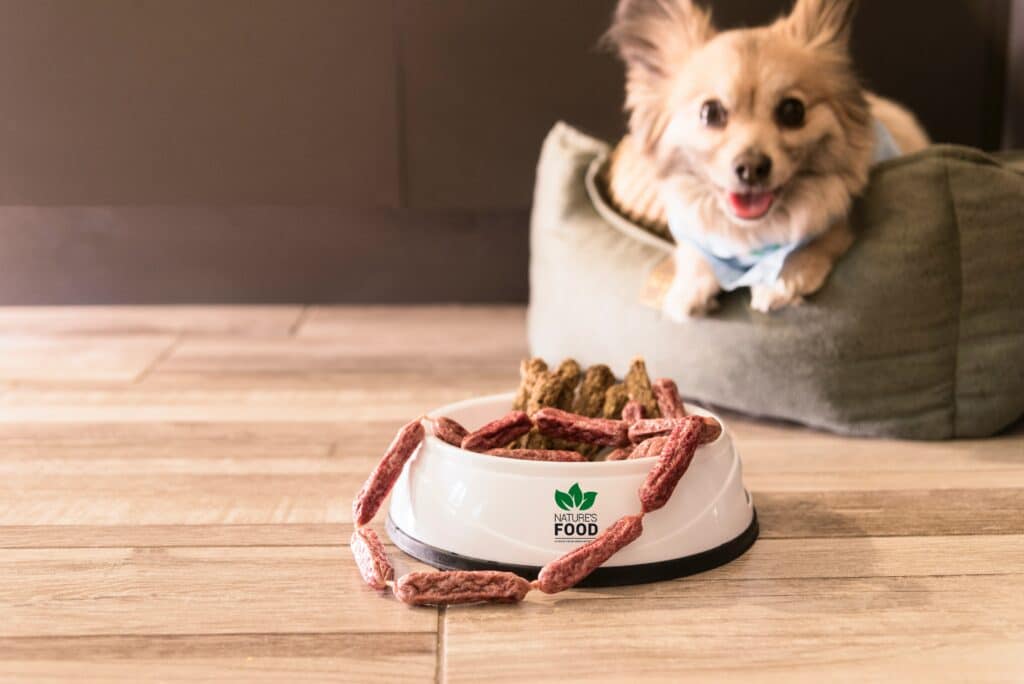
This is expected because they have a few more modifications and components than the regular bowls
4. Can be damaged
If you have a playful dog, then they pose a risk to damage elevated feeders more than the regular ones.
Some of these accessories are constructed with delicate materials which can break off easily when toppled.
5. Might be challenging for a multidog home
If you have multiple dogs, especially different breeds and sizes, then an elevated dog bowl might pose a challenge.
Every dog has their own recommended height for a raised bowl. In the case of many dogs, they can easily switch between bowls when not monitored.
A small dog will find it hard feeding from a tall bowl and might even get choked. You can prevent this challenge by ensuring all dogs get used to their feeding stations.
Always monitor and serve them a food portion they can finish in one session. This will reduce the chances of them switching bowls/feeding from one bowl.
Get Professional Opinion
Puppies and toy breed dogs can comfortably feed from ground-level bowls but larger dogs need something higher.
If you are in doubt about getting a raised dog bowl, then you can reach out to your vet for an expert opinion.
You should consider both the Pros and Cons of elevated dog feeders before getting one for your pup.
Laura is the founder of Furs'n'Paws. She is a also a pet writer and expert with more than 20 years of experience of working with dogs and cats. She developed a very strong love for animals at a young age. Her passion led her to establish a thriving pet sitting and dog walking business in Dubai. As an expert in pet training, behavior, and nutrition, Laura is committed to helping pet owners and pet lovers by offering high-quality information on a wide range of topics.



No responses yet